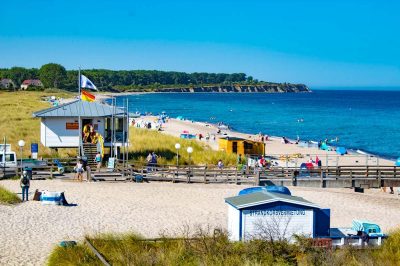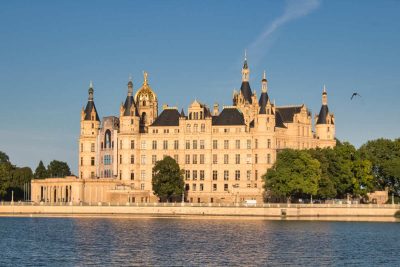The old Hanseatic city of Rostock Germany is located in the northeast of Germany and offers a variety of sights that you can easily explore during a day trip. Rostock’s most beautiful district is located a few kilometers north of the city center, directly on the Baltic Sea. Officially, Warnemünde is a part of Rostock, but the place has retained its own charm and in contrast to the city of Rostock with its massive brick buildings, it is quiet and tranquil here in the small harbor town. At least if you do not arrive in high summer to enjoy the beautiful beach. Come with us on a trip to Rostock and Warnemünde!
Rostock sights – You must have seen this
Rostock, with its approximately 200,000 inhabitants, is the largest city in the state of Mecklenburg-Vorpommern and anything but hectic. The historic center can easily be explored within a day and stretches south of the harbor along the river Unterwarnow and west of the Warnow. Beautiful Gothic brick buildings, numerous cafes, restaurants and pubs can be found here. In the following article I would like to introduce you to the most important Rostock sights.

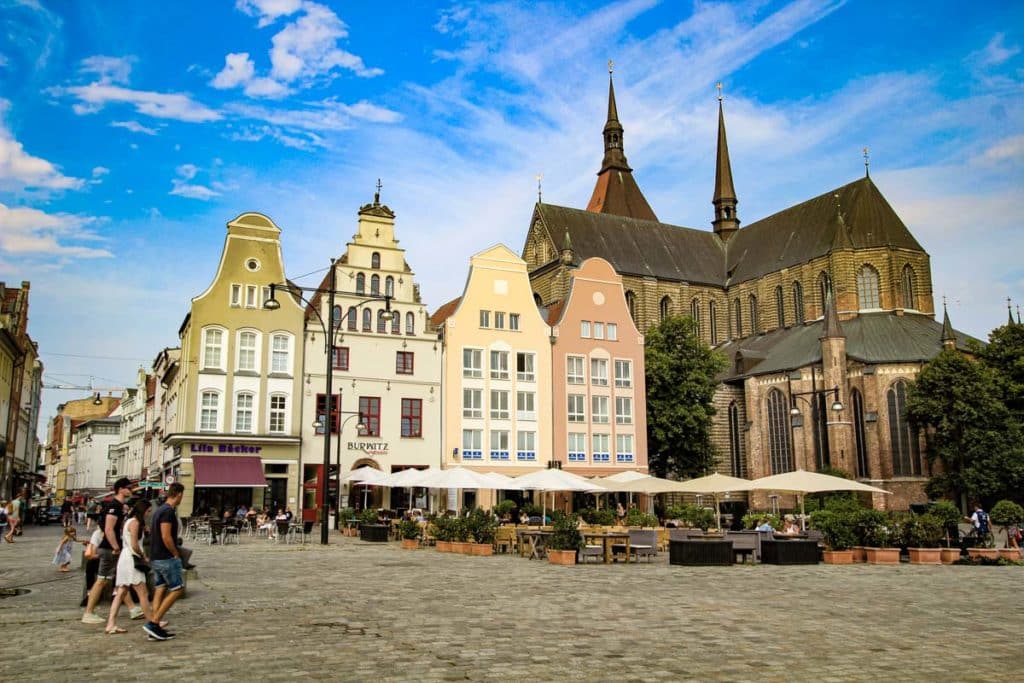
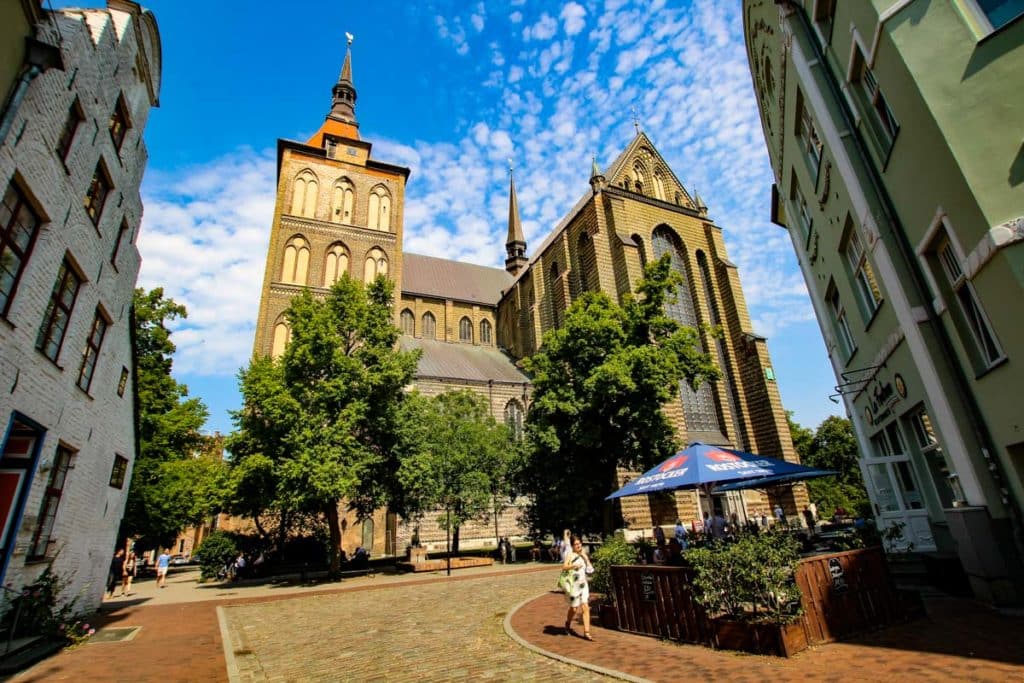
Neuer Markt
The New Market Square (Neuer Markt) in the heart of the Hanseatic city is Rostock’s undisputed landmark. In the Middle Ages, the city had three squares where trade was conducted. However, the Neuer Markt became the city’s most important trading center. Even today, people trade here, especially fruits and vegetables and other local products are offered here by farmers from the surrounding area of Rostock. Around the New Market are also some of the most beautiful buildings of the historic old town.
St. Mary’s Church
Even in the Middle Ages, numerous magnificent town houses were built, testifying to the wealth of the Hanseatic city. The two most beautiful buildings of the Neuer Markt are located on its east and northwest sides: construction of the Marienkirche began in the 13th century, but the church was not completed until the 15th century. It is one of the most important brick churches in northern Germany and impresses in the all-white interior with numerous art-historically important works such as an astronomical clock, a prince’s box with organ, several altars and beautiful windows.
Town hall
But is St. Mary’s Church really the most beautiful building on Neuer Markt? This is certainly debatable, because the town hall is also one of the highlights of any visit to Rostock. The building, which is medieval at its core, has been repeatedly rebuilt over the course of time and features Gothic and Baroque elements. This can be seen particularly well on the facade, because a Gothic brick gable rises above the Baroque front of the Rostock City Hall with its characteristic pastel pink color, somewhat reminiscent of a castle wall – definitely worth a snapshot!
Kröpeliner Straße
Rostock’s most magnificent street leads off in a westerly direction from the market square. Similar to Neuer Markt, Kröpeliner Straße also has many beautiful historic buildings, but above all many stores, cafés and restaurants to offer, so that today it is the most popular promenade for Rostock residents.
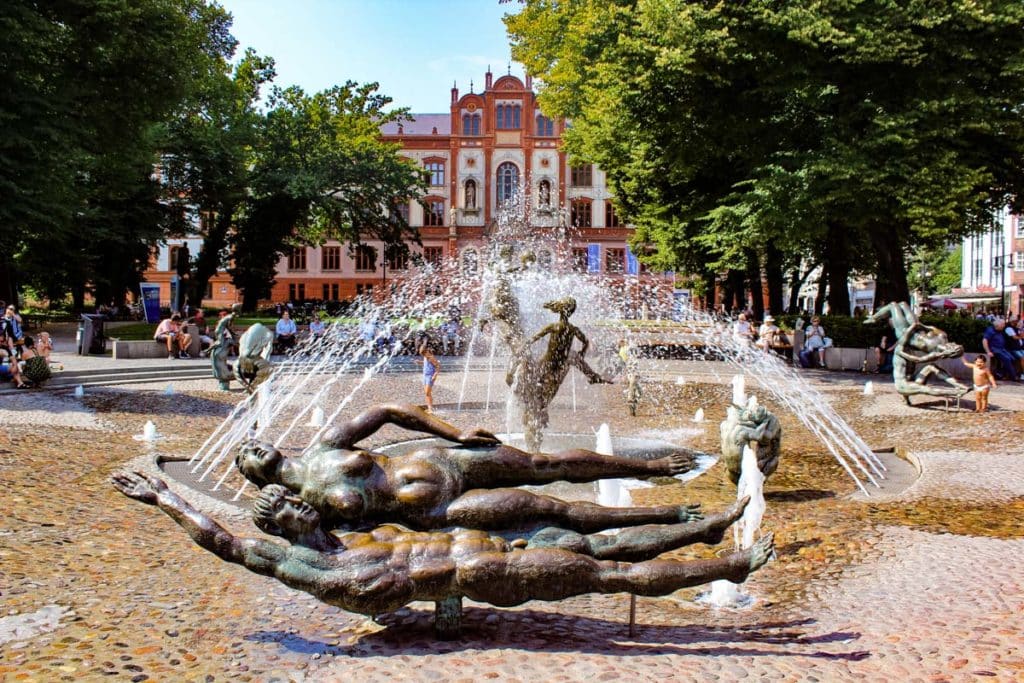
University Square
Kröpeliner Straße leads into Universitätsplatz (University Square), where trade was also conducted in the Middle Ages. Here you will hardly be able to get enough of the many beautiful houses from several eras. Among other things, this is the home of the Rostock University, which has its headquarters in the neo-renaissance building from the 19th century. In front of the university is a monument to Gebhard Leberecht von Blücher. The Rostock-born general defeated Napoleon’s troops at the Battle of Waterloo and became one of the most famous commanders of the time. Much more peaceful is the fountain of joie de vivre (Brunnen der Lebensfreude) from the GDR era, which is called by many Rostockers only Pornobrunnen. Why, it is not difficult to see …
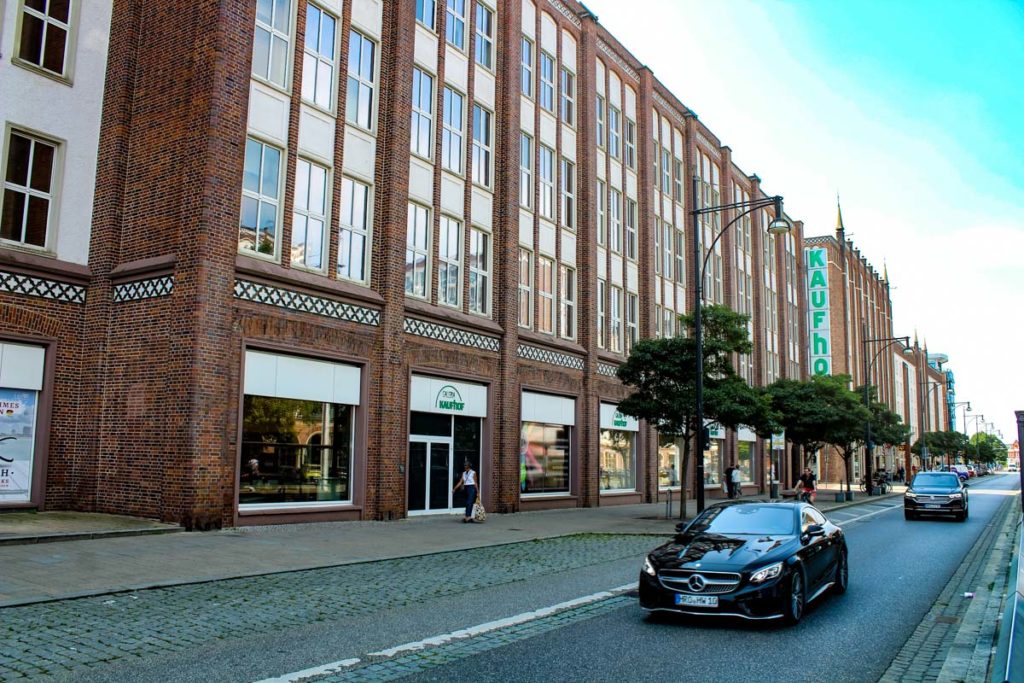
Lange Straße
Speaking of GDR buildings: Many people associate the socialist era with gray prefabricated buildings and pathetic monuments. However, many people are unaware that wide boulevards such as Karl-Marx-Allee in Berlin were also built at that time. In Rostock, the most important port city of the GDR, such a street could not be missing. In the 1950s, a wide boulevard was laid out, in which numerous buildings were erected. However, these were not designed in neoclassicism, as was usual at the time, but took up Rostock’s long tradition as a Hanseatic city. Thus, a unique ensemble of several houses in the brick look was created, which today are listed as historical monuments.
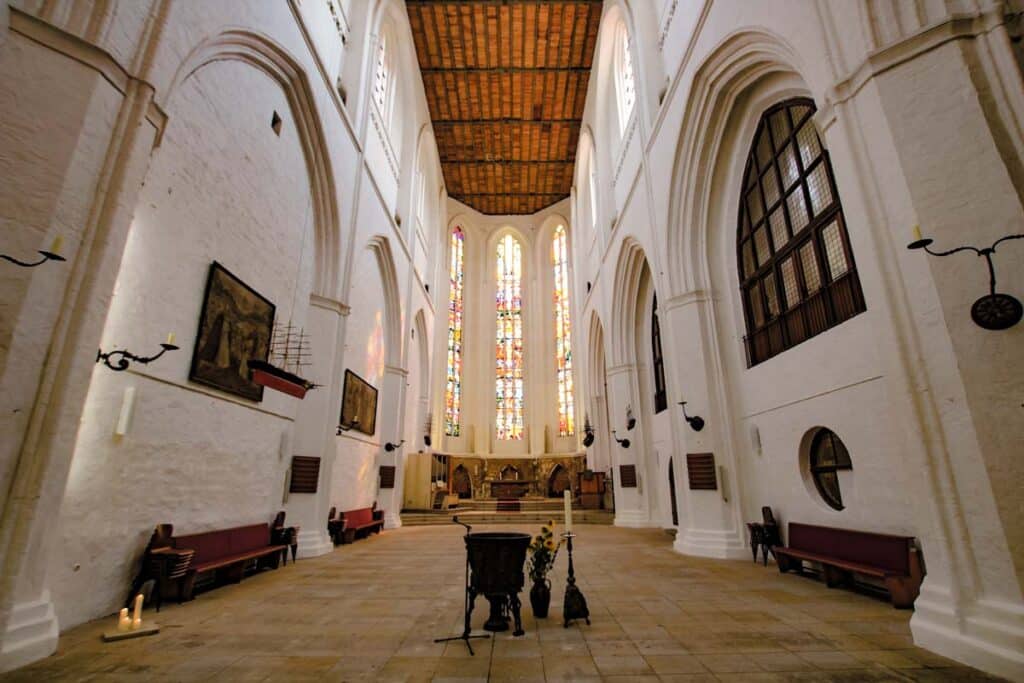
St. Peter’s Church and Eastern Old Town
Things can get hectic on the Neuer Markt. It’s a good thing that there is a much quieter, but not uninteresting part of the old town, which extends around the Old Market, Rostock’s third important historical trading center. Here you can stroll leisurely through the alleys. I recommend you to visit the Petrikirche. There is a beautiful viewpoint from which the whole city is at your feet. The best thing about it: you can reach it comfortably by elevator and don’t have to deal with the many stairs. The church itself is also worth seeing; at 117 meters, it is the highest in Rostock and also the oldest in the Hanseatic city.
Holy Cross Monastery and ramparts
The southern end of the old town is formed by the medieval ramparts with several gates, along which you can take a leisurely stroll. On the way, you will come across a large park and a beautiful little rose garden, where you can relax wonderfully. Directly adjacent to the ramparts is the 13th century monastery of the Holy Cross. There used to be several monasteries in Rostock, of which only this one has survived. In the monastery church you can admire several ornate altars, on the premises is also the Museum of Cultural History, one of the most important in the region.
Warnemünde sights – these are the most beautiful places
Only 10 kilometers separate Rostock and its northernmost district Warnemünde, and yet the big city with its brick buildings suddenly seems very far away. Warnemünde, which has only about 6000 inhabitants, is a chic spa town with a wonderful beach and some architecturally and historically interesting buildings that you can easily explore in half a day. In the following article I will introduce you to the most important sights of the city.
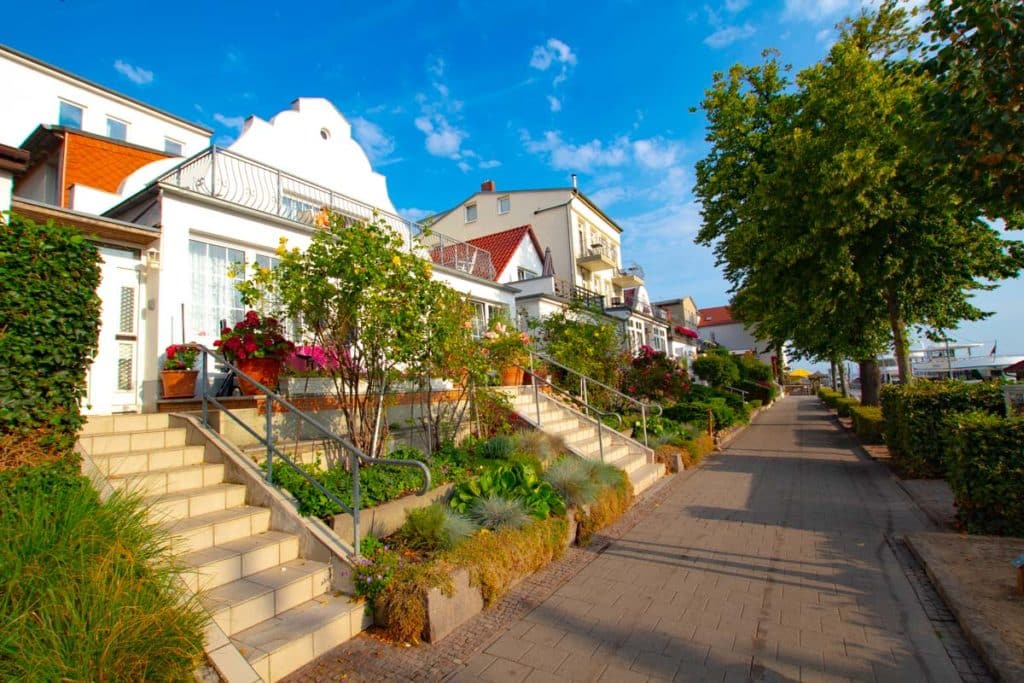
Alter Strom
In the 15th century, a canal was dug in what is now the heart of Warnemünde to connect the port of Rostock with the Baltic Sea. In the course of time, more and more fishermen and sailors settled here and pretty little houses were built. Today you can stroll along the colorful houses and enjoy the view of the water. At the end of the stream (Alter Strom literally means Old Stream) are also some ships at anchor, which sometimes go to sea or are also firmly moored. Here merchants sell delicious fish sandwiches – a good refreshment for the rest of the walk!
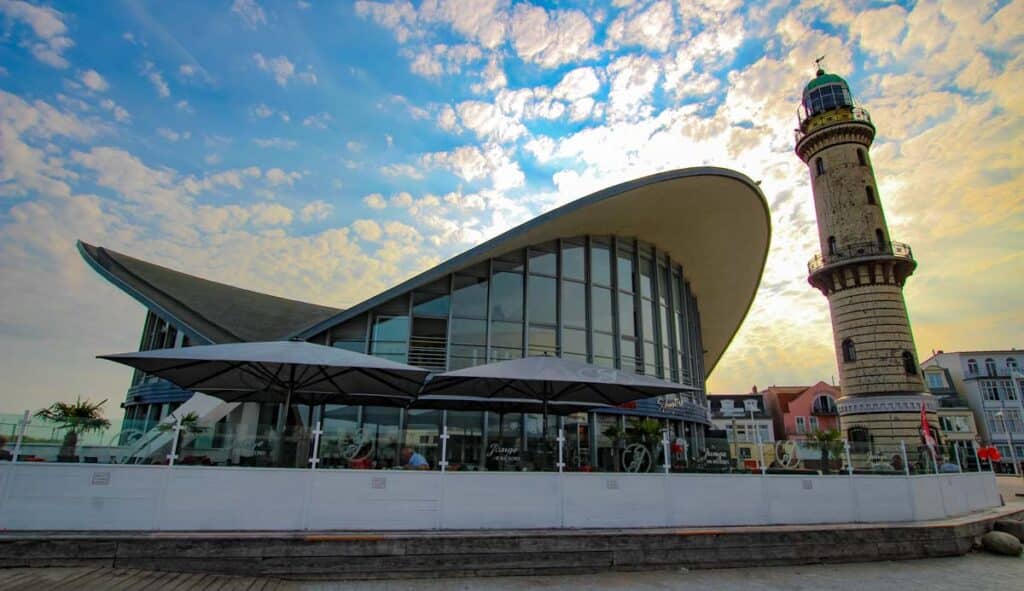
Teapot
Warnemünde’s most unusual ensemble of buildings stands very close to the beach. The teapot with its curved roof construction was designed by the architect Ulrich Müther, who designed numerous sensational buildings in the GDR. The modernist building is now considered a true GDR architecture icon and is one of the most photographed buildings in the city. After the teapot was renovated around the turn of the millennium, it shines again in new splendor and the cafes that are located here are worth a little break.
Lighthouse
The teapot doesn’t quite seem to fit in with its neighbor, the lighthouse, which stands right next to it. But that’s what makes these two buildings so charming. The lighthouse was built at the end of the 19th century and has been doing its job reliably ever since. It is unusual that it stands so far from the water. However, its glow is so strong that it shines almost all the way to Denmark! You can climb the lighthouse and enjoy a beautiful view of Warnemünde from the top.
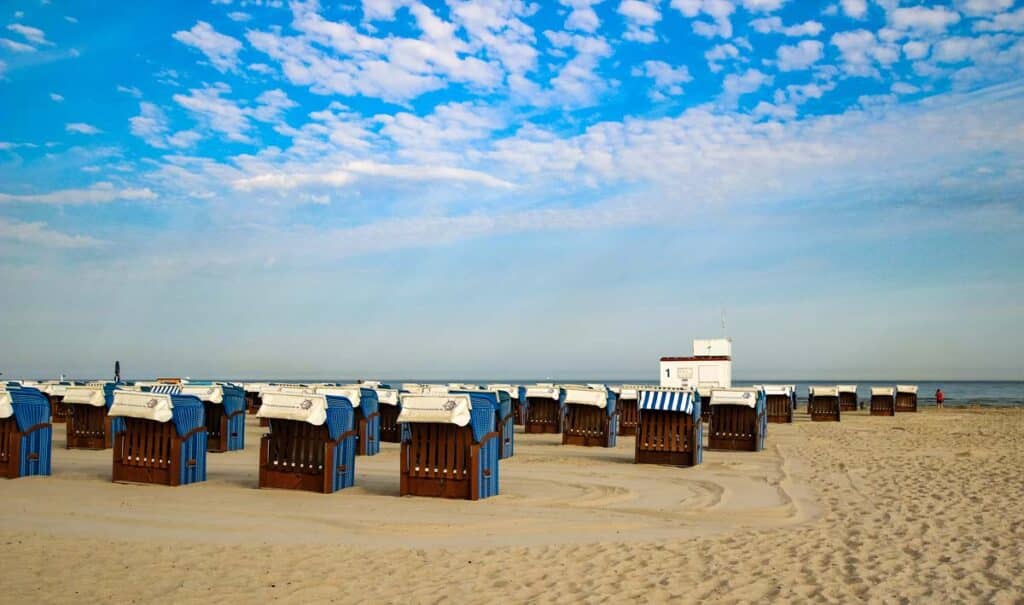
Beach
The many architecturally interesting buildings are of course only one reason to come to Warnemünde. But most guests are here for something else entirely: Warnemünde’s mile-long and wide sandy beach is one of the most beautiful on the Baltic Sea. Here you can walk for hours and enjoy the gentle sound of the sea. In the season, it can get pretty crowded here, so I recommend securing a spot as early as possible in the morning. By the way, the characteristic beach chairs, which can be found everywhere on the Baltic Sea and of course here, probably originate from Warnemünde. Historians assume that they were once invented here.
Boardwalk
When you’ve had your fill of swimming, I recommend a short walk along the beach promenade. This leads past many chic villas from the time around 1900 and ends at the Hotel Neptun, another impressive building from the time of the GDR.
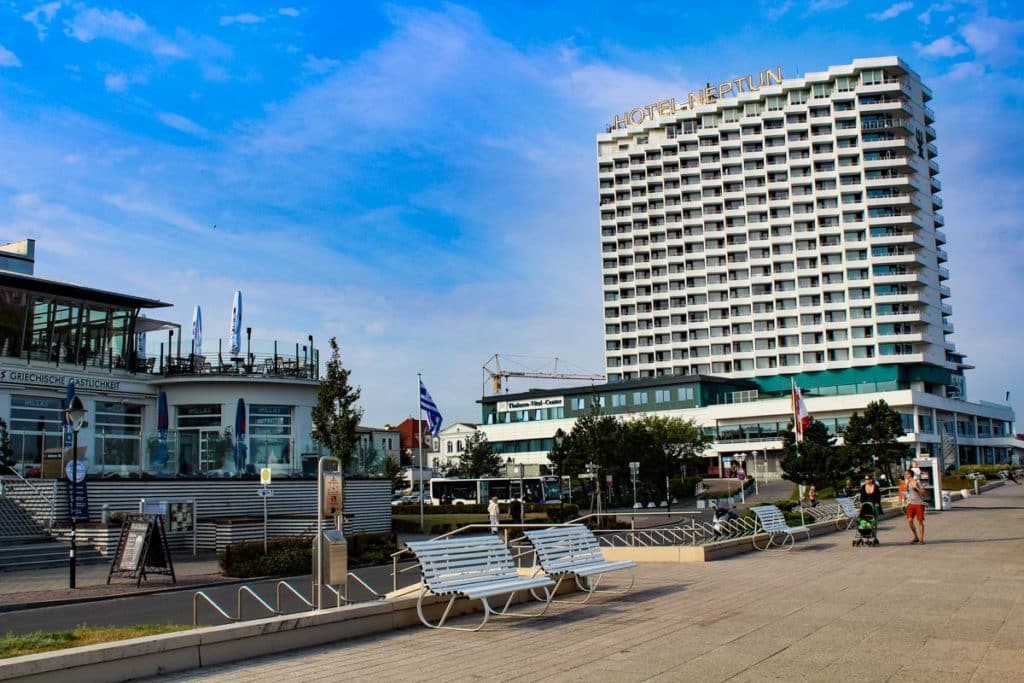
Hotel Neptun
Luxury vacation in the GDR? In the supposedly classless society, there was not supposed to be such a thing; the country’s best establishments were reserved for foreign tourists. The Wellness Hotel Neptun, built in 1971, was an exception and quickly achieved legendary status. Several restaurants, a seaside swimming pool and the first discotheque in the GDR made it a widely known place. State guests such as West German Chancellor Willy Brandt or Cuba’s ruler Fidel Castro also stayed here.
The Neptune money
The Neptun* even had its own currency, the Neptun money, the guests could not pay here with the GDR mark! When checking in, the respective currency had to be exchanged, which brought valuable foreign currency into the country. And you could quickly get rid of the Neptun money here. A glass of beer, for example, costed almost ten times as much as in a normal pub.
Hotel guests targeted by the Stasi
Due to the many foreign guests, it was therefore no wonder that the hotel was bugged by the State Security (Stasi). The fact that foreigners and GDR citizens vacationed here together was probably a thorn in the side of the Stasi spies.
Even if you don’t want to spend the night here, I recommend a visit to the Sky Bar on the 19th floor, from where you have a unique view over Warnemünde and the beach.
Travel tips Warnemünde and Rostock Germany
One thing in advance: For the exploration of Rostock and Wismar I recommend the Rostock Card. You get it for 24 or 48 hours in different versions and could not only use the local transport for free, but also participate in city walks through Rostock and Warnemünde without extra charge, get discounts in numerous museums, restaurants and much more. Here you can find all the information about the card including the points of sale.
Connection between Rostock and Warnemünde
Rostock and Warnemünde are connected by a suburban train that runs about every 20 minutes. You can take the lines 1, 2 and 3 and are thus after about 20 minutes (depending on the direction of travel) at the Rostock main station or Warnemünde station. The train station Warnemünde is located directly at the Alter Strom. To get from Rostock main station to the city center, you have to take streetcar no. 5 or 6. You can find a detailed map here.

Which tours are worth a try?
- Guided city tours: Both Rostock and Warnemünde offer recommended city tours that will tell you everything you need to know about both places. In Rostock, these start Monday through Saturday at 2 p.m. and Sunday at 11 a.m. at the tourist information office on Universitätsplatz and cost only 7 euros. The guided tours of Warnmünde are offered less frequently (Tuesdays at 6 p.m. and Thursdays and Saturdays at 11 a.m.), but the price is the same.
- Harbour tours: If you’ve had enough of walking, I recommend a harbor tour. It starts at the city port in Rostock and gives you a whole new perspective. You won’t see much of the city, but you will see a lot of the port of transshipment. The trip passes Warnemünde, where you can get off to explore the district on foot. Afterwards you can use any other ship to get back to Rostock. Info and departure times can be found here.
Where to eat and drink?
- Eisliebe, Alexandrinenstraße 33, Warnemünde. Alexandrinenstraße is the second most important promenade in Warnemünde next to Alter Strom. At the beginning of the street is a small ice cream parlor with its own delicious creations. My tip: Try the rice pudding ice cream with cherries, it tastes almost like the warm version you remember from your childhood.
- Zur Kogge, Wokrenterstraße 27, Rostock. Is the Kogge still a restaurant or already a museum? I can’t say for sure, because here you’ll find everything on the walls that reminds you of seafaring. In Rostock’s oldest maritime restaurant, not far from the city harbor, you can find not only all the exhibits, but also delicious food, especially the fish dishes are recommended.
- Zum Alten Fritz, Warnowufer 65. This restaurant at Rostock’s city harbor is not only a good place to go if you’re in the mood for seasonally changing cuisine, it also serves many varieties of the delicious Störtebeker beer, which is brewed in Stralsund and is currently winning many prizes in brewery competitions.
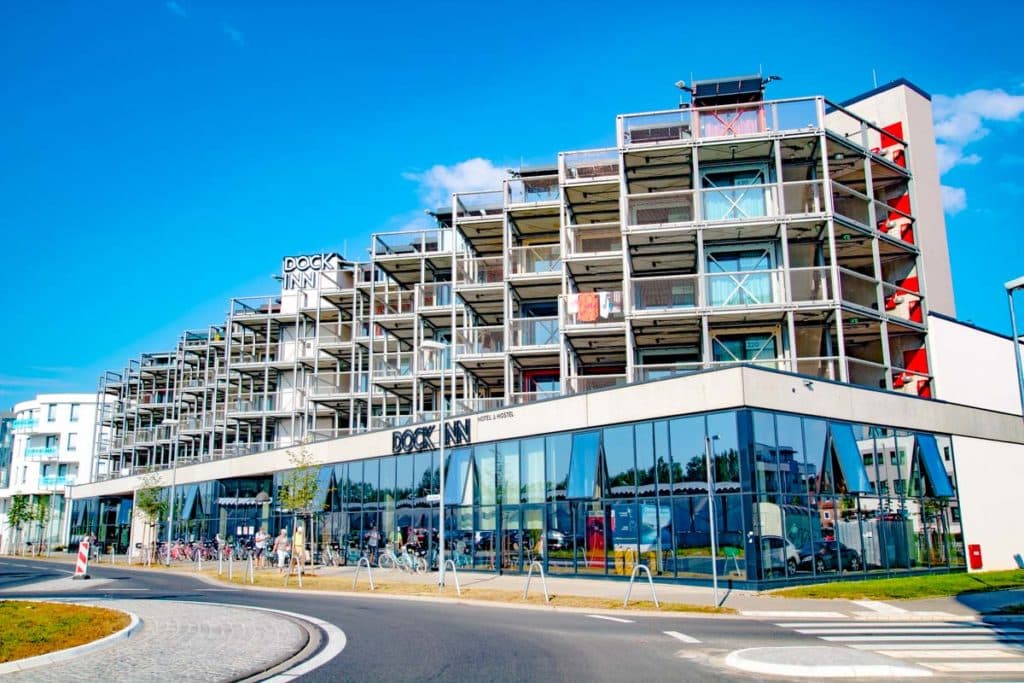
Where to stay overnight?
- Dock Inn*, Zum Zollamt 4. Dock Inn is one of the most unusual accommodations I’ve seen so far: Here you don’t live in a house, but in old containers that have been converted into small apartments – totally crazy! Whether in a dormitory or a double room, here you can stay cheaply not far from the port of Warnemünde and also borrow bicycles for free. By the way, the Dock Inn won the German Tourism Award in 2017.
- Hotel Neptun*, Seestraße 19. You can of course also stay overnight in the iconic building described above.
Book recommendation
You still have not enough of Rostock Germany and Warnemünde? Unfortunately, there is not much literature in English about the city, but an exciting spy novel about the GDR times.
No products found.
- Reno Stutz (Redaktionsleiter) (Author)
- Karsten Schröder (Author)


